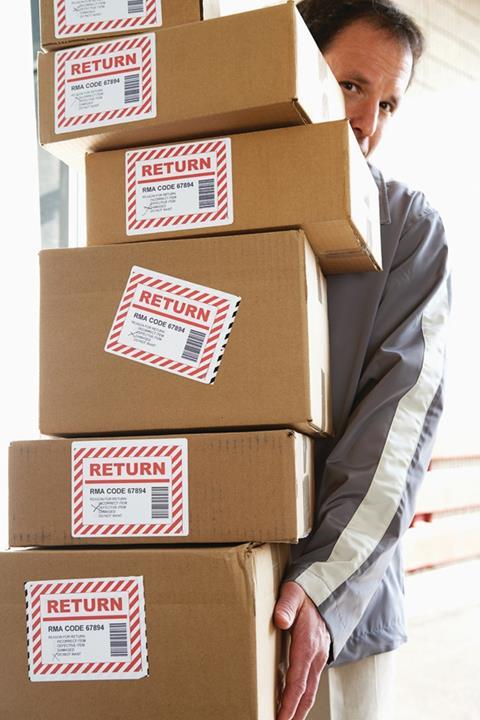eCommera reflects on the top five ways retailers can manage returns cost-effectively and how ever-improving technology can help.
Returns have been a hot topic of late, with recent research claiming that 56% of shoppers who bought any type of clothing online in the past six months returned one or more items. Women’s fashion brands are said to be suffering most, with almost two thirds of the shoppers surveyed having returned at least one item of women’s clothing.
The growth of ecommerce is often blamed for the increase in returns – and the associated cost for retailers – as more people are won over by the convenience of shopping online and being able to return items that aren’t quite right free of charge.
So how should retailers handle increasing returns?
Returns are an integral part of running a successful ecommerce and omnichannel operation. Most sophisticated retailers manage them cost-effectively, be they etailers like Asos or omnichannel retailers such as Argos.
The secret is careful diagnosis and planning. Here are five tips for taking the headache out of returns.

1. Invest time in your product detail pages
To reduce the likelihood of returns to start with, ensure your online product images and descriptions are as accurate as possible. As well as including a range of images, consider using video and incorporating reviews and ratings. Similarly, ensure consistency across your range, and don’t change your sizing or cut on standard products.
2. Capture data around the reason for returns – and act on it
Establish an effective data capture process around the cause of returns, so that you can track, for instance, how many returns are due to the product not meeting expectation of size, colour or feature. And once you have this data at your fingertips, ensure you act on it – whether that’s by providing better product descriptions or ensuring timely dispatch.
3. Explore how technology can help
Consider new technologies which aid product visualisation, such as online fitting tools or virtual reality experiences, in order to reduce the likelihood of returns.
4. Make the most of your store network
If you have stores, encourage customers to return online orders to a bricks-and-mortar store, where the item can be immediately returned to the rail for purchase, as well as allowing you the opportunity to upsell.
5. Optimise your returns process
Make the process of return handling as cheap and rapid as possible, in order to reduce the amount of time that products are unavailable for sale, as well as reducing costs. This might involve technology or process improvements, to make return handling more streamlined.
We need to move away from the hysteria that ecommerce is the cause of the death of retailers. BHS and Austin Reed did not flounder due to the cost of returns; they floundered because the proposition was outdated and did not support the store network that they had established.
If you’d like to find out more about how to run an effective ecommerce and omnichannel operation, contact me at eric.fergusson@ecommera.com.
Eric Fergusson, director of retail services, eCommera






























No comments yet